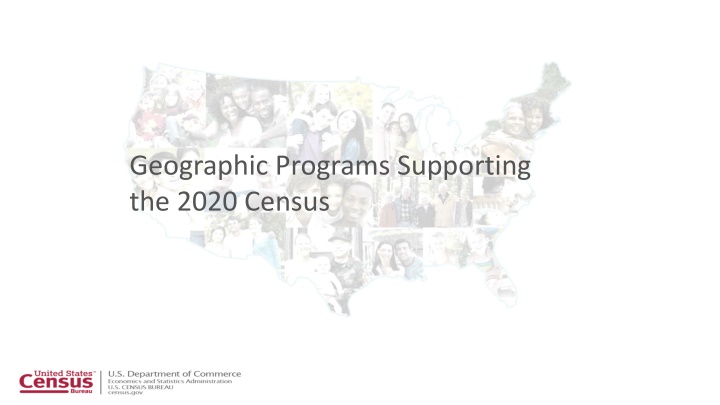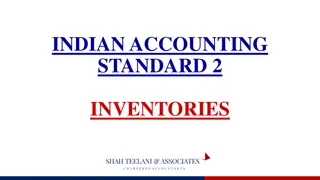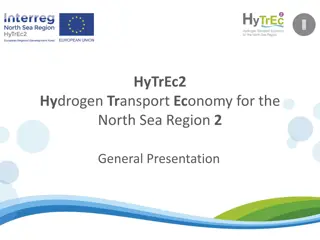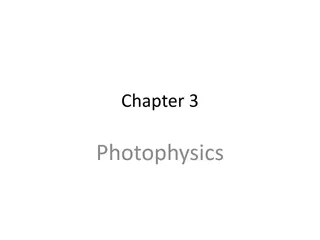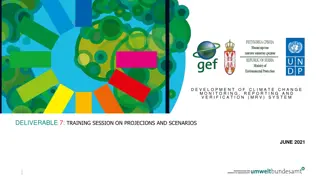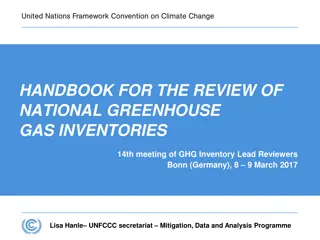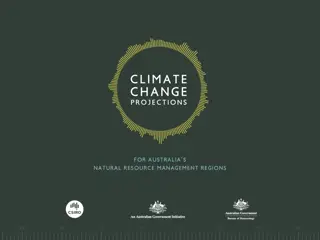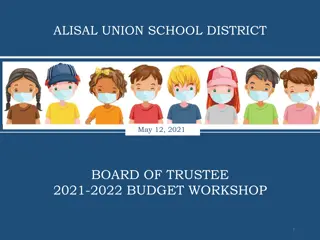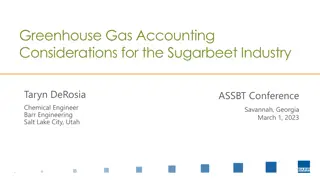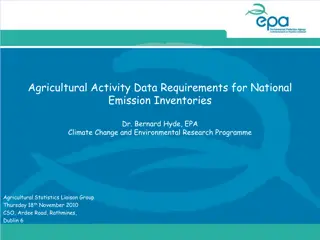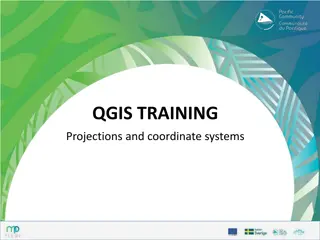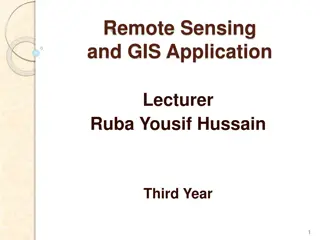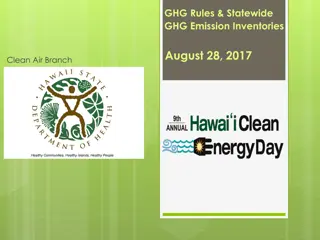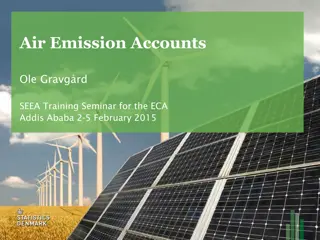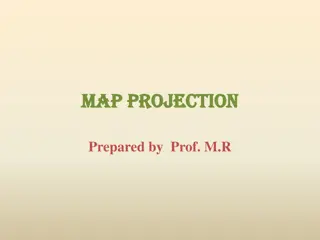Transport Emission Inventories & Projections Presentation
This presentation covers various aspects related to transport emission inventories and projections, including national GHG emissions, sectoral contributions, emission trends, drivers in transport, and more. It provides valuable insights into the greenhouse gas scenario in the transportation sector.
Uploaded on Apr 04, 2025 | 1 Views
Download Presentation

Please find below an Image/Link to download the presentation.
The content on the website is provided AS IS for your information and personal use only. It may not be sold, licensed, or shared on other websites without obtaining consent from the author.If you encounter any issues during the download, it is possible that the publisher has removed the file from their server.
You are allowed to download the files provided on this website for personal or commercial use, subject to the condition that they are used lawfully. All files are the property of their respective owners.
The content on the website is provided AS IS for your information and personal use only. It may not be sold, licensed, or shared on other websites without obtaining consent from the author.
E N D
Presentation Transcript
Geographic Programs Supporting the 2020 Census
Address List Maintenance 2010 - 2020 On-going Maintenance and Update Address Canvassing US Postal Service s Delivery Sequence File (DSF) Nationwide In-Office Address Canvassing LUCA Opportunity to review and update the Census Bureau s address list for the 2020 Census Updates from tribal, state, and local government address lists and commercial address lists (GSS) In-Field Address Canvassing 2020 CENSUS 2010 CENSUS Annual In-Field data collection, checks, and tests Continuous identification of stability and change 5
Geographic Support System GSS The Geographic Support System Initiative (GSS) is an integrated program that supports the 2020 Census by: improving address coverage continuously updating spatial features enhancing the quality assessments and measurements of the Master Address File/Topologically Integrated Geocoding and Referencing System (MAF/TIGER) database
Geographic Support System GSS Through the GSS, the Census Bureau works with local government partners to collect geographic data about their boundaries including annexations to ensure we have the most up to date geographic and address data to develop tools for more efficient ways to share data
Local Update of Census Addresses LUCA What is It? An opportunity for state, local and tribal governments to review the list of addresses that will be used to conduct the Decennial Census Why Participate? Ensure the Census Bureau has an accurate list of housing units for your community to facilitate the best count possible.
LUCA Background Authorized by the Census Address List Improvement Act of 1994 (Public Law 103-430) Implemented in the support of the 2000 Census and refined to support the 2010 Census Provides a voluntary opportunity for designated representatives of tribal, state and local governments to review and comment on the addresses used to conduct the decennial census 7
Whats New for 2020 LUCA Includes ungeocoded address records for state and county participants Requires residential multi-unit structure identifiers (e.g., Apt 1, Unit A2, #3001, etc.) Includes residential structure coordinates, if available Allows participants to submit residential structure coordinates, if available Allows participants to submit non-city style addresses with corresponding map spot 8
Who can participate in LUCA Federally recognized tribes with a reservation and/or off-reservation trust land States Counties Incorporated places Cities, towns, boroughs, or villages Regional Planning Agencies* * when designated by a local government
Preparation - Early Tools 2020 LUCA Address Block Count List Provides 2017 address counts by 2010 census block so you can assess whether you d like to participate. https://www.census.gov/geo/partnerships/luca.html 11
Preparation - Early Tools Census Geocoder Takes addresses and returns that same address along with a latitude/longitude and/or census geography. https://geocoding.geo.census.gov/ 12
Preparation - Participation Methods Geographic Update Partnership Software (GUPS) based on QGIS GIS Format Shapefiles and Address List Paper Format - Address List and Maps 12
Preparation Next Steps (Participant) Register to participate (July December 15, 2017) Attend a training workshop (Fall/Winter 2017) In-person workshops Self-training aids and Webinars available online Conduct your LUCA review (Feb-April 2018) 120 calendar days upon receipt of materials to complete review 13
Boundary & Annexation Survey BAS What is It? An annual survey of all governments to collect legal boundaries in effect on January 1st of the BAS year. Why Should Governments Participate? Boundaries are used to tabulate data for: Decennial Census (year ending in 0) Economic Censuses (years ending in 2, 7) Population Estimates Program (annually) American Community Survey (annually)
Boundary & Annexation Survey BAS Submission Deadlines: March 1 of survey year Deadline for BAS submission to be included in Population Estimates Program and American Community Survey May 31 of Survey Year: updates reflected in the following year s BAS. Boundaries submitted by May 31 will be included in LUCA. Participation Tools: GUPS (Geographic Update Partnership Software ), your GIS, paper maps Review Online NOW using TIGERweb: https://tigerweb.geo.census.gov/tigerweb/
2020 Participant Statistical Areas Program PSAP What is it? An Opportunity for regional planners to review and update Census Tracts, Block Groups and Census Designated Places (CDPs) in preparation for 2020 data tabulation and publication in 2021. Basic program goals: Encourage states as well as Regional Commissions and Councils to participate in this once-a-decade data review and update Facilitate our dissemination of data for small geographies
2020 Participant Statistical Areas Program PSAP Program Implementation 2020 PSAP plan created by the Census Bureau for review (new for 2020) 2 Phases: Delineation (120-days) Verification (120-days) Schedule Spring 2017: Late 2018: Late 2019: Program announcement Plan delineation Plan verification
Boundary Validation Program (BVP) January 2020 Highest Elected Officials (HEO) and Tribal Leaders (TL) are provided maps of jurisdictional boundaries for initial review and update in March 2020 HEOs and TLs complete final validation of boundary changes provided during BVP or BAS by May 2020 Boundaries as of January 1, 2020 will be used for 2020 Census data tabulation 19
How to prepare for geographic programs: Ensure your government responded to the 2017 BAS The LUCA provides only those addresses insideyour jurisdiction s boundaries, so if your boundaries are incorrect, you may not see your entire address list. Thank you Get your local address list in shape for LUCA Determine unit designations for multi-unit buildings Determine residential vs. commercial addresses Geocode to current Census Tract/block See: https://geocoding.geo.census.gov/
Questions? Jim Castagneri James.d.Castagneri@census.gov 720-962-3880
